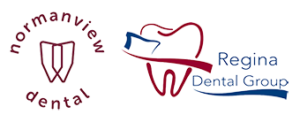How to Floss (Everyday!)
Brushing your teeth daily may seem like a no-brainer, but why do most people’s oral hygiene routines stop there? One of the main reasons why people do not floss as regularly as they brush is simply because they don’t know how to properly. Flossing is an important oral hygiene habit and it’s up to you to stay on top of your oral health and maintain your pearly whites!
Why should I floss?
Flossing is a critical hygiene habit that not only cleans and dislodges food particles stuck between your teeth, it also reduces the amount of bacteria and plaque in your mouth, that can cause cavities and gum disease.
How do I floss properly?
- Break off 18 inches of dental floss.
- Stand in front of a mirror.
- Twist the floss around each middle finger. Be sure to leave an inch or two of floss to work with.
- Pull the floss taut between your thumbs and index fingers.
- Slide gently up and down, between your teeth.
- Carefully, sweep the floss around the base of each tooth/gum line.
- Adjust along the piece of floss to use clean sections for in between each tooth. Reusing dental floss can redistribute bacteria to other parts of your mouth, even if you rinse it.
- Gently remove the floss from in between your teeth using the same back-and-forth motion used to bring the floss towards the gumline.
- To dispose of dental floss, roll it into a ball and put it into the trash.
Which type of floss should I use?
There are several types of dental floss, but not all forms are created equal. While some types work well for someone with braces or other dental appliances, others are created for different smiles and ease of use.
- Standard floss is maybe the most common type of dental floss. This thin, nylon floss is ideal for someone with a crowded smile or teeth that are close together. Standard floss typically comes waxed or unwaxed, although waxed floss can make it a lot easier to get in between tight spaces.
- Dental tape is wider than Standard Floss and flat like a ribbon. This type of dental floss is ideal for someone with braces and other dental appliances, gaps, or large spaces in between their teeth.
- Super floss is another type of dental floss recommended for people with braces, dental appliances, bonding, and spacing. This dental floss ‘threader’ has a reinforced tip for ease when feeding it between your teeth, as well as regular floss to remove plaque beneath the gum line.
- Floss picks are small plastic tools with curved ends and short, built-in pieces of floss. Although this type of floss has gained popularity in recent years, the amount of floss on each pick encourages a possible redistribution of bacteria to other parts of the mouth, even if it is cleaned. These are great to keep in one’s pocket or purse for emergencies, but should not be used as a replacement for string floss.
- Water flossers are handheld devices that remove food and bacteria from the crevices of your mouth using water pressure. Water flossing technology can be a great alternative for those with braces, retainers, implants, and gingivitis.
How do I floss with braces?
- Break off 18 to 24 inches of waxed dental floss.
- Stand in front of a mirror.
- Thread the floss between your teeth and the main wire.
- Twist the floss around each middle finger. Be sure to leave an inch or two of floss to work with.
- Pull the floss taut between your thumbs and index fingers.
- Gently press the floss between your teeth. Then, in a ‘U’ shape move the dental floss to and from the gum line along the side of one tooth and then down the other.
- Carefully unthread the floss from behind the wire.
- Repeat for each tooth.
- To dispose of dental floss, roll it into a ball and place it in the trash.
Your oral hygiene involves more than just brushing your teeth. It also involves flossing and knowing how to use floss correctly (everyday!) Flossing is a critical oral hygiene habit that helps remove plaque buildup and bacteria from between your teeth and around the gum line and should be done daily. Remember, good oral health leads to better overall health and one should see their dental teams for routine cleanings every 4-6 months, even while practicing regular brushing and flossing.
If you would like to learn more, please do not hesitate to give us a call or contact us to book an appointment.
